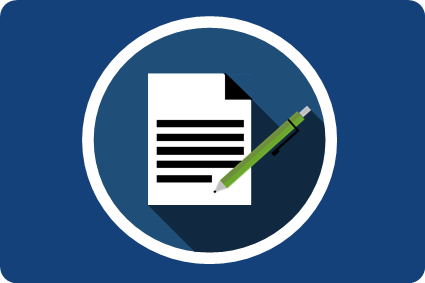How to Write the Best Lease
Updated 18th May 2021 | 5 min read Published 4th June 2015

As more companies turn towards leasing as an alternative form of asset finance, it has become more apparent that many companies choosing to lease are not agreeing the most competitive lease deals that they could.
To fully appreciate the benefits and value leasing provides, the importance of a well written lease cannot be overstated. Competitive leasing deals should take into account all of your business’s internal procurement and accounting requirements, whilst also satisfying the demands of the lessor, resulting in a productive and mutually beneficial lease agreement.
Below you will find some of the main points to consider before writing a lease, to ensure you can get the best deal available and achieve full accounting compliance.
The Asset
The majority of assets that can be purchased can also be leased. Anything from HGVs and forklift trucks through to IT equipment and construction tools. It is important at this stage to confer with your operations teams to find out not only what asset you need, but also, what practical elements will be required from the lease. How long will you need the asset for? Would it be more beneficial to arrange maintenance for the asset as part of the lease? Are you considering a secondary lease term or the option to purchase the asset? Do you require an early termination clause?
It would be very frustrating negotiating what you believe to be a competitive lease on a fleet of trucks, only to learn that you’re lease contains a limit on the amount of mileage you can cover over the lease term that doesn’t match the amount you need.
Once you’ve decided upon your assets and negotiated a competitive purchase prices, you will be in a more advantageous position to discuss arranging an economical lease rate and contractual terms.
The Type of Lease
When it comes to classifying leases, there are primarily two leasing options available to companies: Operating Lease or Finance Lease. There are of course variations around these as to whether you are taking maintenance or wish to purchase at the end. Depending on their circumstances a lessee may want a lease agreement where they have more control over the asset and can also sell it on themselves after the term ends in which case it would be a Finance Lease. The downside to this however is that payments will be higher over the lease term and the asset will have to be listed on the company balance sheet.
By contrast an Operating Lease is generally a cheaper source of finance, but ownership remains with the lessor and they expect the equipment back at the end. Into this mix comes contract hire which is similar to leasing with the added bonus that maintenance and repair of the asset are included within the agreement.
Another issue to consider which is directly linked to the above lease types is how long the company wants to lease for. With a Finance Lease there is a longer lease term relative to the asset’s estimated economic life than an Operating Lease.
Choice of Lessor
Many companies don’t actually realise that there are several different kinds of lessor and funders who they can potentially lease their assets with. Each of these will have benefits and negatives depending on what you need from your leases.
A manufacturer lessor is the company who directly supplies the asset to the lessee. When purchasing assets the manufacturer/supplier will often supply a lease quote alongside the purchase quote. It is imperative that certain points are clarified at this point to ensure you are getting the best value for money. The prudent lessee would take this purchase price and ask for alternative quotes from supplier/manufacturer as well as independent lessors. Whilst independent lessors may be more flexible/competitive, the ease of having your maintenance and lease with one supplier is lost. Again, a company’s choice of lessor will ultimately depend on their own internal requirements but it is clear that this needs to be explored and not just accepted.
With digital technologies and corporate globalisation revolutionising business on a daily basis, it is now feasible for companies to work with lessors around the world.
Negotiation
After the decisions on lease and lessor type, the next important step for a lessee to ensure effective leasing arrangements is thorough and detailed discussions with their chosen lessor. We’re not talking about choice of take away food levels of serious discussion, but an agreement certainly has to be carved out which pleases both parties. You cannot undervalue the benefit of a mutually beneficial relationship and this cannot be achieved without strategic negotiation and compromise.
Both parties want to feel satisfied with the arrangement, therefore the final written lease should faithfully reflect the discussions. The same is also true for discovering if there are any terms and conditions hidden away not amenable to the lessee. Although the lease rate is important, it is essential to ensure that your lease schedule is practical with your business requirements; be sure to include reasonable and realistic return conditions, make sure there are no hidden costs or chargeable add-ons you were not aware of and that you have at least discussed how your lease deals with worst case scenarios.
Having these discussions will allow the lessee to go into more detail about their lease as well as to correct anything they are not 100% happy with.
The conclusion we can therefore draw is that writing a good lease is essential to optimising any company’s leasing arrangements. Whether it is ensuring that both the lessee and lessor are satisfied with the agreement or making sure they have the correct lease type for their assets and internal requirements, writing a good lease remains one of the key procedures for any company experienced in, or new, to leasing.
Share This Article?



